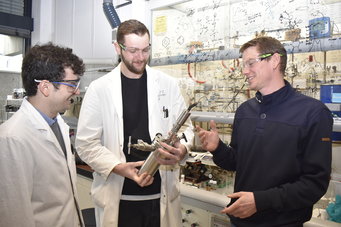NSW Health is advising the community to be aware of the signs and symptoms of rare but severe, invasive bacterial infections following recent increases in cases.
Dr Trevor Chan, Clinical Director, Emergency Care Institute at the Agency for Clinical Innovation said late winter and spring are usually peak times for meningococcal disease in NSW, while cases of invasive group A Streptococcus (iGAS) are steadily increasing.
“It’s very important the community is aware of the risks of these infections. While meningococcal and iGAS are rare, both can be very serious and can cause death or permanent disability,” Dr Chan said.
“So far, 28 cases of meningococcal disease have been reported in NSW this year. 544 cases of iGAS have been notified in NSW to the end of August this year.
“In the early stages, invasive bacterial infections can appear similar to more common viral illnesses. Occasionally they can occur at the same time, or follow a viral infection.
“Rapid intervention and treatment for invasive bacterial infections are available and can be lifesaving.
“We urge people to pay close attention to symptoms, trust their instincts, and seek urgent medical care if symptoms worsen or if they or the people they care for are getting worse.
“Bacterial infections, like meningococcal and iGAS can lead to sepsis, a life-threatening condition. Intervention and treatment for invasive bacterial infections are available and can be lifesaving,” Dr Chan said.
A person with sepsis often reports feeling the sickest they have ever felt. Other indicators of serious illness include fever, a fast heart rate, difficulty breathing, cold hands and feet or a mottled look to the skin, difficulty waking or increased lethargy or confusion. The person looks unwell and may also have nausea, vomiting or diarrhoea, headache or muscle aches and pains.
Symptoms to look out for in young children that may indicate severe illness include irritability, difficulty waking, high-pitched crying, refusal to eat/feed, fewer or no wet nappies or decreased urination, cold or mottled limbs, and difficulty breathing. For more information see the Sydney Children’s Hospital Network website – signs of serious illness in children.
People with meningococcal disease may experience severe headache, neck stiffness, dislike of bright lights, or unexplained joint or limb pain. A non-blanching rash of red-purple spots may also occur but often presents later in the illness. Do not wait for a rash to occur to seek urgent medical care.
People with iGAS may develop a red, warm, painful, and rapidly spreading skin infection which may have pus or ulceration. Children may present with a sunburn-like rash. The rash and skin changes are not always present so do not wait for a rash to seek care if the person is very unwell.
For more information on iGAS, meningococcal disease and sepsis see the NSW Health website.
If you are concerned about your or your child’s health call your GP or healthdirect on 1800 022 222. If you or the person you care for is seriously unwell call 000 or go to your local Emergency Department.







